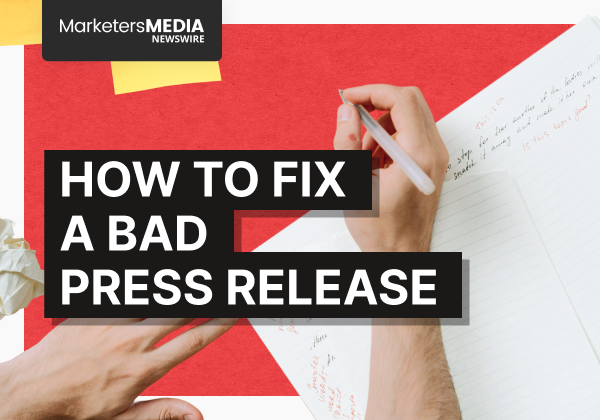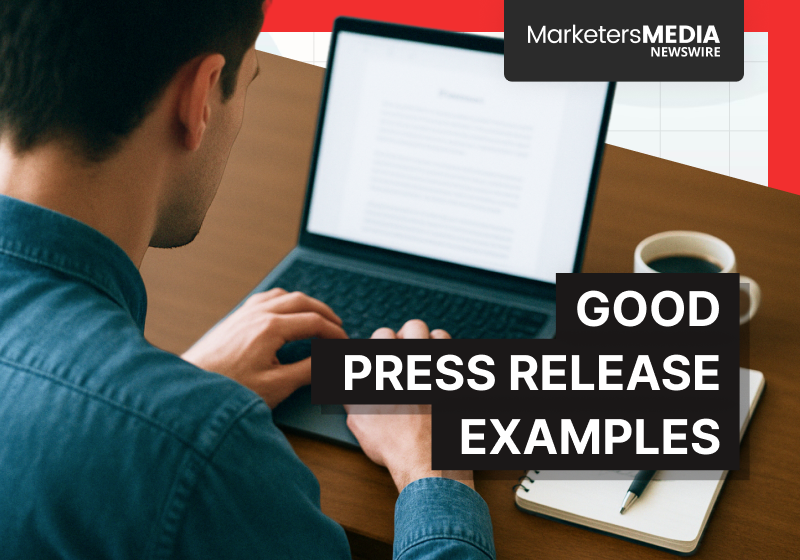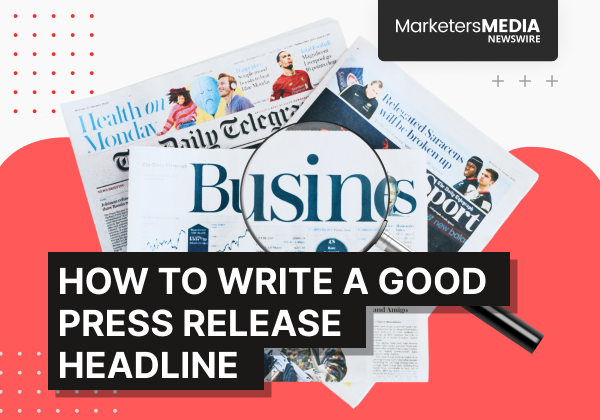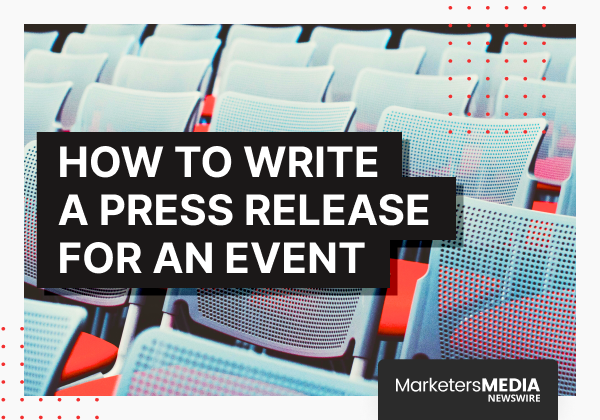Let’s face it: journalists are busy people. They receive hundreds of press releases daily, and most end up in the digital trash bin.
But here's the good news: a well-crafted press release can help you gain the media coverage and visibility your brand or event deserves.
In this guide, we'll walk you through some common mistakes that many press release writers often make. By avoiding these pitfalls, you'll significantly improve your chances of getting your story noticed and shared by the media.
The Basics of Press Release
A press release is a formal announcement you send to news reporters or media outlets to share important information about your company or something big that happened.
The purpose of a press release is twofold: (1) to inform the media about your news, and (2) to pique their interest enough that they want to cover it.
It's not meant to be a full-blown article or an advertisement - more on that later.
Elements of a Press Release
Now, let’s break down the key elements you’ll find in any well-structured press release:
- Headline: The title that captures the main point and entices readers.
- Summary: A brief overview of the key points, usually just a sentence or two.
- Dateline: The release date and usually the city of origin.
- Body: The main content, expanding on the headline and summary with all necessary details, typically 3-5 short paragraphs.
- Boilerplate: A standard paragraph about your company that you can use in all your press releases.
- Contact Information: How journalists can reach you for more details.
Here’s an example:
Now, we'll explore some common mistakes people make when it comes to crafting an effective press release.
By the end, you'll be well-equipped to craft a press release that stands out for all the right reasons.
Common Mistakes in Press Release
A bad press release is one that doesn’t share anything newsworthy, sounds too much like a sales pitch, or is hard to read—basically, something a journalist would skip right over.
Let’s break it down.
- #1 Lack of Newsworthiness
- #2 Weak or Unclear Headlines
- #3 Headline vs. Content Mismatch
- #4 Writing Like an Article Instead of an Announcement
- #5 Overly Promotional Language
- #6 Poor Formatting and Structure
- #7 Failure to Proofread
- #8 Sending Identical Press Releases Repeatedly
#1 Lack of Newsworthiness
Not every company update warrants a press release. Your announcement needs to be genuinely newsworthy to catch a journalist's interest.
So, what makes a story newsworthy?
- It's timely and relevant
- It impacts a significant number of people
- It's unique or unexpected
- It involves a prominent figure or organization
Bad Example:
Why is it Bad?
- This is not a new information or a groundbreaking announcement. It doesn’t announce any changes or updates.
- It would be more effective as a guide for a applying for a driving license online, not as a press release.
How to Fix It?
To convert this into a press release, you can highlight newsworthy elements such as:
- Announcement of a new insurance plan specifically designed for new drivers.
- Partnering with driving schools to offer more resources for new drivers
The goal is to provide new, newsworthy information. If you don't have anything new to add, it might be better to hold off until you do.
#2 Weak or Unclear Headlines
A press release headline is your first, and often only chance to grab a journalist or potential customer’s attention.
Having a strong headline matters because it is your first impression that determines whether the rest of your press release gets read and sets the tone for your entire release.
Tips for writing compelling and concise headlines:
- Keep it under 15 words if possible
- Use active voice and strong verbs
- Include the most newsworthy element
- Avoid jargon or obscure references
Bad Example:
Why is it Bad?
This headline is vague and doesn't give any real information. It fails to capture interest or convey why the news matters.
How to Fix It?
Be specific and highlight the unique value. Here are a few examples:
- "Katalis Partners with Traveloka to Provide Digital Literacy Training for the Tourism Industry"
- "Yayasan PETRONAS Releases 2023 Annual Report with a Focus on Empowering Communities, Enriching Lives"
#3 Headline vs. Content Mismatch
Your headline is a promise to your readers. When your headline doesn’t accurately reflect the content of your press release, it can severely undermine your credibility and effectiveness.
Bad Example:
Why is it Bad?
The headline promises expert advice on retirement preparation, but the body of the press release doesn't deliver on that promise. Instead, it spends too much time talking about John’s background and achievements.
How to Fix It?
- Focus on the expert advice or new service related to retirement preparation.
- Avoid unnecessary details about John’s background unless directly relevant to the announcement.
- Clearly explain how John’s expertise can benefit the target audience.
Pro Tips:
After you've written your press release, go back and read your headline. Ask yourself: "Does this actually reflect what I've written?" If not, it's time for a rewrite.
When crafting your headline, stick to the facts. What's the most important thing in your release? That's what should be in your headline. No need for exaggeration or hype - just tell it like it is.
If possible, have someone unfamiliar with the topic read both your headline and content to check for alignment.
#4 Writing Like an Article Instead of an Announcement
Many of us often fall into the trap of writing a press release like an article.
While it might be tempting to go into detailed storytelling, it's important to remember that a press release is not an article. It should be concise and to the point.
Avoid lengthy introductions, unnecessary details, and flowery language. Instead, focus on the key facts, what’s new or important, and why it matters.
Difference between a press release and a news article:
| Press Release | vs. | Article |
|---|---|---|
| To announce news or events to the media | Purpose | To inform, educate, or entertain readers on a topic. |
| Usually 1-2 pages (300-500 words). | Length | Can be much longer, often 500-2000+ words. |
| Follows a specific format (headline, summary, dateline, body, boilerplate, contact information). | Structure | More flexible structure, often with an introduction, body, and conclusion. |
| Includes essential background, but brief and directly related to the news. | Background Information | Can provide more extensive background and context. |
| Objective, factual, uses third-person pronouns (he, she, they). | Tone | Can include opinion, analysis, or a more narrative style. Uses first-person pronouns (I, we, our). |
| Concise, straightforward, focused on key information. | Writing Style | Can be more descriptive, use storytelling techniques. |
Bad Example 1:
Why is it Bad?
This ‘press release’ reads like an informative article, providing general dental advice, rather than a newsworthy press release.
How to Fix This?
To transform this into a press release, you'll need to identify a newsworthy element. For example:
- Launching a new dental hygiene program or service.
- Announcing a groundbreaking dental research finding.
- Introducing a new dental product or technology.
- Sharing statistics about a dental health issue.
Besides, refrain from using subheadings like "Conclusion" in a press release, as this is not a news article.
Bad Example 2:
Why is it Bad?
These headlines read like a sales letter or a blog article, rather than a press release.
How to Fix It?
Reconsider the core announcement or event. Ask yourself: What’s the newsworthy news? Is there a groundbreaking achievement, product launch, or significant event?
If there is, construct a headline that clearly communicates it; if there isn’t, there's no point in writing a press release.
#5 Overly Promotional Language
I know it's tempting to talk about how amazing your product is or how groundbreaking your service will be. But remember, journalists are looking for news, not promotional content.
Promotional language can turn off journalists as it comes across as biased and self-serving, and they won’t be taken seriously as news.
So keep your message clear and factual, as press release is about sharing information, not selling.
Bad Example:
Why is it Bad?
- It is clearly promoting XYZ App, which is a big no-no for a press release.
- The headline doesn't announce a new development, launch, or achievement. It simply states a product's feature.
- The call-to-action (CTA) phrase, “Download it now and start your unforgettable journey!” reads like a sales letter, which again, is promotional in nature.
How to Fix It?
To turn this into a press release, you'll need to focus on making a newsworthy announcement instead. For example:
- New City Launches: Instead of a generic introduction, highlight new cities recently added to the app.
- Partnership or Feature: Is there a new feature for the app? Maybe new cities added, a revamped interface, or a partnership with a tourism board? Highlight that as the news.
- Milestone Achieved: Did the app reach a million downloads or win an award? Announce that achievement and tie it back to the app's value proposition.
For CTA, instead of "Download it now and start your unforgettable journey!”, try something like "XYZ app is available for download on the Apple App Store and Google Play Store.", or "To learn more about the app, please visit xyz.com."
Remember, all you need to do is lay out the facts in a clear, straightforward way, not sell or promote. Let the journalist who picks up your news do the storytelling for you.
#6 Poor Formatting and Structure
The visual presentation of your press release is almost as important as its content. If it’s poorly formatted, it can be really hard to read and less likely to be picked up by journalists.
So, proper paragraphing and using white space well are key. They make your release more readable and less intimidating, and they help key information stand out.
Tips for improving readability:
- Use short paragraphs (3-4 sentences max)
- Include bullet points for lists or key details
- Use subheadings sparingly to break up longer releases
- Maintain consistent font and spacing throughout
- Avoid excessive bold or italicized text
Bad Example:
Why is it Bad?
- The subheadings are too excessive, which then reads more like an article.
How to Fix It?
- Narrow down to 4 subheadings max.
So, don't underestimate the power of good formatting—it can make a big difference!
#7 Failure to Proofread
Errors in your press release can really hurt your credibility and make it less likely that your news gets covered.
It can come off as careless and distract from your main message. Plus, if journalists see mistakes, they might question the accuracy of your information.
So, take the time to proofread and get everything right before you send it out.
Common types of errors to watch for:
- Spelling and grammar mistakes
- Incorrect dates, names, or figures
- Inconsistent formatting
- Broken links (in digital releases)
Bad Example:
Here are some handy proofreading tips and tools for your use:
- Read your release out loud to catch awkward phrasing
- Use grammar and spell-check tools, but don't rely on them exclusively
- Have someone else review your release
- Take a break before final proofreading to approach with fresh eyes
#8 Sending Identical Press Releases Repeatedly
Recycling the same press release might seem like a good idea if you didn't get coverage the first time, but it's not. Journalists don't want to see the same announcement over and over.
It suggests that you don't have anything new to say, and it can irritate journalists who might remember seeing the same content before.
If you need to announce something multiple times, find a new angle each time.
Instead of repeating releases:
- Update with new information: Add recent developments or results to your original announcement
- Focus on a different aspect each time: Highlight various features or benefits of your news in separate releases
- Use other channels between releases: Share your message through social media, blog posts, or newsletters instead of another press release
Again, if you don't have anything new to say, it might be better to wait until you do.
By avoiding these common pitfalls, you'll be well on your way to crafting a press release that captures attention and conveys your news effectively.
In the next section, we'll cover additional tips to further refine your press release writing skills.
Additional Tips for Writing a Successful Press Release
#1 Using Visuals and Multimedia
Including visuals and multimedia in your press release can make a big difference in engagement.
Consider the following tips:
- Add high-quality images or infographics to illustrate your point
- Include video content for digital releases
- Present data using charts or graphs for easy digestion
- Ensure all visual elements add value to your story
Just make sure all the visual elements you include add real value to your story.
#2 Ensure Clear Contact Information
Journalists need to know who to contact for more information. Missing or incomplete contact details can result in missed opportunities for coverage.
Here are some best practices:
- Provide the PIC’s email address with domain name, not just a general email (support, info, hello, etc.)
- Offer multiple contact methods (phone, email, social media)
- Ensure the contact person is readily available after the release is sent
- Double-check all contact information for accuracy
#3 Time Your Distribution
Think about the news cycle and any industry events when scheduling your release. You’ll want to avoid major holidays or big world events that could overshadow your news.
It's best to send your release early in the week during business hours for maximum visibility. Also, using a reputable PR distribution service can help you reach a wider audience.
And don’t forget to follow up personally with key journalists after distribution to make sure they’ve seen it and to answer any questions they might have.
Last but not least…
As the saying goes, “To err is human…”, but what’s often overlooked is how important it is to be aware of our mistakes and fix them after.
Writing press releases is a skill you'll develop over time. Pay attention to what works, adapt, and keep improving. A good press release simply tells a story that matters to your readers.
Now that you've seen the bad, it's time to explore the good. Check out these press release examples to see how it’s done right.
Free Press Release Template
Tell us where to send your PDF:





![24 Best Press Release Examples [For All Occasions]](https://marketersmedia.com/wp-content/uploads/2025/03/Press-Release-Examples-for-All-Occasions.png)


